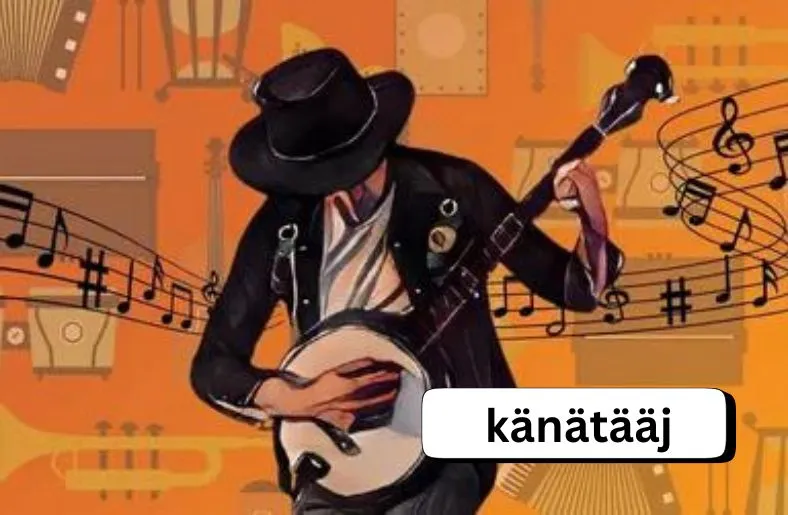Introduction
Känätääj is a significant part of Finnish folk music, known for its enchanting melodies. It is deeply rooted in Finnish culture, where its unique sound and historical relevance make it a key component of the nation’s musical heritage. Imagine the soothing tones of the Kantele, a traditional Finnish instrument, creating a magical atmosphere in the heart of Finland.
Finnish folk music, with Känätääj at its core, reflects the country’s history and values. Känätääj connects the past with the present, bridging generations through its timeless melodies. This blog post will explore what Känätääj is, its history, its connection to the Kalevala, and its modern revival.
We will delve into the Kantele, the instrument central to Känätääj, and its various playing techniques. Additionally, we’ll look at how Känätääj has evolved over time and its current influence on contemporary Finnish music. By the end, you’ll have a deeper appreciation of this unique musical tradition.
What is Känätääj?
Känätääj refers to a style of Finnish folk music played on the Kantele, a traditional string instrument. The term highlights the role of the musician in bringing this music to life. Känätääj is known for its distinctive sound, created through unique plucking techniques and modal scales.
This music plays a crucial role in Finnish culture, representing the nation’s heritage and traditions. Känätääj stands out from other folk traditions due to its specific use of the Kantele and its particular musical style. The music is a vibrant expression of Finnish identity.
Unlike other folk traditions, Känätääj often features repetitive, melodic patterns that evoke a sense of calm and connection to nature. This distinctiveness is a key aspect of what makes Känätääj a beloved and enduring part of Finnish music.
The Kantele: Heart of Känätääj
The Kantele is central to Känätääj, a traditional Finnish string instrument. Its history dates back to at least the 11th century, making it an ancient and important part of Finnish musical tradition. The Kantele comes in various forms, including the fixed-neck kielekantele and the rounded Karelian Kantele.
The kielekantele typically has more strings, allowing for a richer, more complex sound. The Karelian Kantele has fewer strings and produces a softer tone. These variations impact the music’s character, influencing how Känätääj sounds and feels.
Playing the Kantele involves various plucking techniques, which help create the music’s distinctive rhythmic and melodic qualities. These techniques are essential for producing the unique sound of Känätääj, making the Kantele an integral part of the tradition.
Historical Journey of Känätääj
Känätääj has a rich history, with its roots tracing back to Finland’s early days. Similar string instruments have been found in archaeological sites from the 11th century. Känätääj as a distinct tradition began to emerge around the 16th century, playing a crucial role in Finnish society.
Historically, it was more than just music; it was a way to tell stories and preserve history. Kanteletar, or Känätääj performers, traveled between villages, sharing tales through their music. This tradition helped keep Finnish culture alive and vibrant.
Prominent it musicians contributed significantly to its preservation. Their skillful performances ensured that it remained an essential part of Finnish cultural heritage, passing down stories and traditions to future generations.
Känätääj and the Kalevala
The Kalevala is Finland’s national epic, compiled in the 19th century by Elias Lönnrot. It contains myths, legends, and historical fragments about Finnish heroes and mythical creatures. Some believe it music might have once accompanied the Kalevala’s recitation.
In a traditional setting, it performances might have enhanced the storytelling of the Kalevala. The music could have matched the epic’s dramatic events, adding depth to the narratives and characters.
Both it and the Kalevala reflect Finnish culture’s deep connection to nature and mythology. The themes in the Kalevala are echoed in Känätääj’s music, making them culturally and thematically intertwined.
Modern Revival and Influence
Känätääj is experiencing a modern revival, with contemporary artists breathing new life into this traditional music. Musicians like Anna Puu and bands such as Värttinä are blending traditional Känätääj sounds with modern styles, making it accessible to today’s audience.
These artists are helping preserve it while introducing it to new generations. Their innovative approaches ensure that this ancient tradition continues to evolve and remain relevant in contemporary Finnish music.
Cultural events and festivals featuring it celebrate its ongoing importance. These gatherings allow audiences to experience the tradition live and appreciate its role in Finnish heritage.
How to Experience Känätääj Today
To explore Känätääj, start by listening to recordings from modern artists like Anna Puu and Värttinä. Their music offers a fresh perspective on traditional Känätääj sounds and is a great introduction to the style.
Attending live performances or festivals can provide a firsthand experience of it. These events often feature performances that showcase the Kantele and its traditional playing techniques.
Online resources and educational websites dedicated to Finnish folk music can also enhance your understanding of it. They offer information on recordings, performances, and the tradition’s cultural significance.
Common Challenges and Solutions
Newcomers to Känätääj may face challenges such as finding quality resources and understanding the music’s unique style. To address these issues, seek recommendations from experts or join online communities focused on Finnish folk music.
Accessing information about it can be difficult if resources are primarily in Finnish. Use translation tools and explore educational websites to overcome language barriers.
Taking introductory courses or attending workshops can provide valuable insights into it. These educational opportunities can deepen your appreciation and knowledge of this captivating musical tradition.
Conclusion
Känätääj, with its roots deeply embedded in Finnish culture, represents a unique and captivating aspect of Finnish folk music. From its historical significance to its modern revival, it continues to enchant and inspire audiences. The Kantele, central to this tradition, and the musical techniques used in it, reveal a rich tapestry of Finland’s musical heritage. By exploring it through recordings, live performances, and cultural events, you can gain a deeper appreciation for this timeless music. Embracing it not only connects you to Finland’s past but also celebrates its vibrant present and future.





